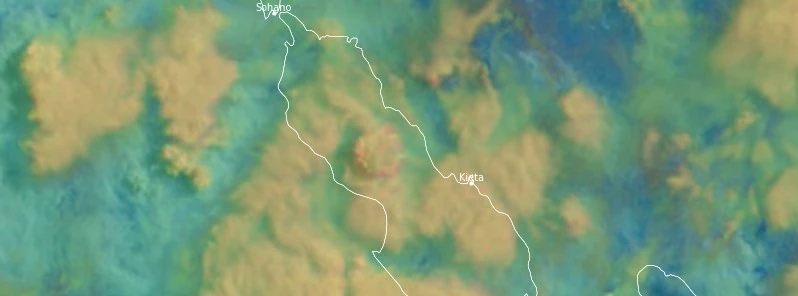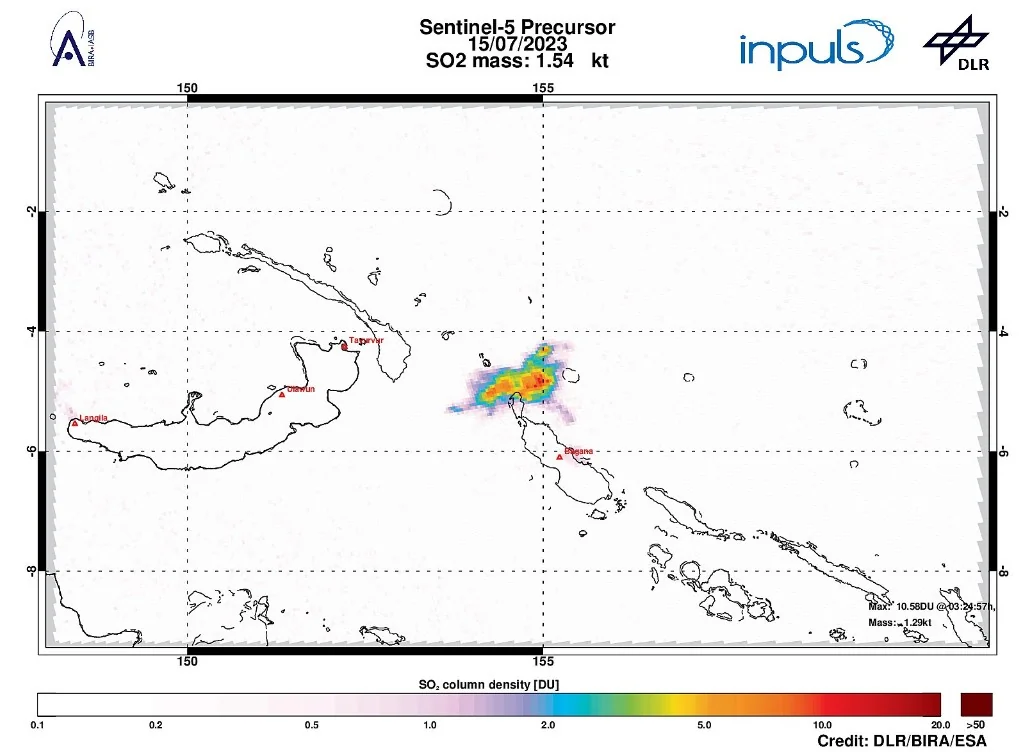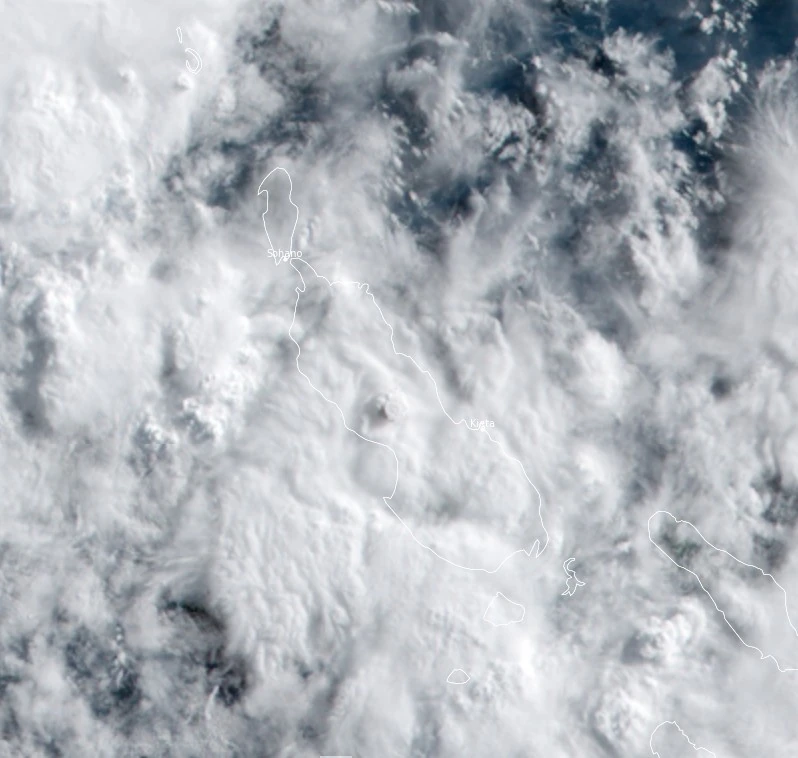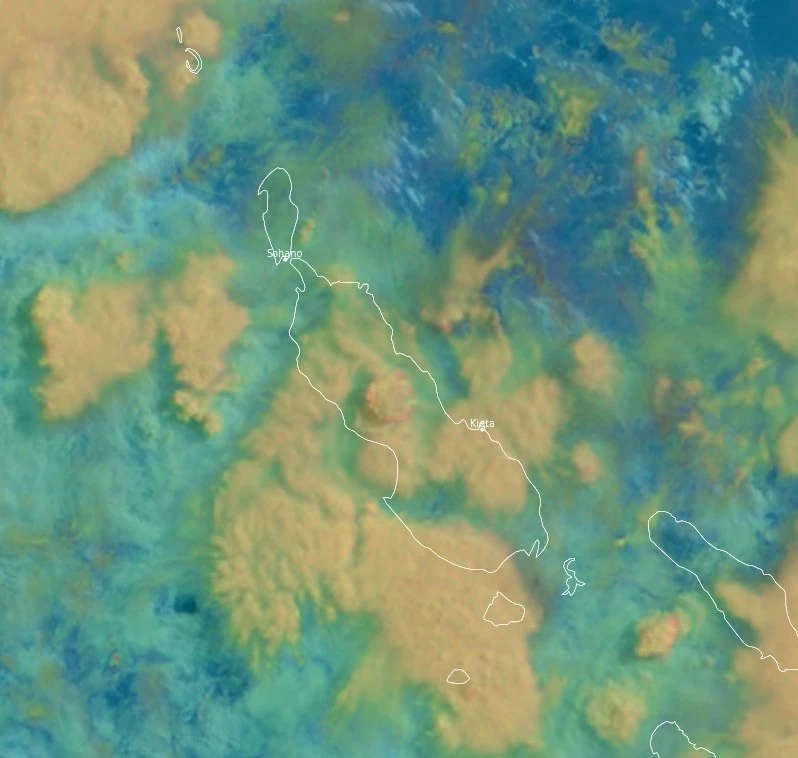High-level eruption at Bagana volcano, ash plume to 16.4 km (54 000 feet) a.s.l., P.N.G.

A high-level explosive eruption took place at Bagana volcano, Papua New Guinea at around 21:30 UTC on July 14, 2023, sending a discrete plume of ash and gas to 16.4 km (54 000 feet) above sea level. The Aviation Color Code remains at Orange.
According to the Darwin VAAC, it was a discrete volcanic ash eruption, with ash moving north of the volcano. The height was determined by the temperature of the cloud of approximately -80 °C (-112 °F).
Ground reports indicate pyroclastic flow was produced during the eruption.1
The ash cloud dissipated by 10:50 UTC.
This event was very similar to the one on July 7 when heavy ash fell on a nearby region and continued through July 9. Read more about it below multimedia files.



An explosive eruption at Bagana on July 7 also send a large ash, gas, and steam plume to high altitudes and caused significant ashfall in local communities.2
A report issued by the Autonomous Bougainville Government (Torokina District, Education Section) on July 10 noted that significant ash began falling between 20:00 and 21:00 LT on July 7 and covered most areas in the Vuakovi, Gotana (9 km / 5.6 miles SW), Koromaketo, Laruma, and Atsilima villages.
By about 22:00 LT on July 7, the eruption plume had reached upper tropospheric altitudes based on satellite images. Sulfur dioxide detections in satellite images from July 8 indicated that the plume, likely a mixture of gases, ice, and ash, had risen to 16 – 18 km (52 500 – 59 100 feet) a.s.l., reaching the tropopause. Ashfall reportedly continued until July 9.
The ashfall covered vegetation, destroying bushes and gardens, and contaminated rivers and streams used for washing and drinking water; residents drank from coconuts and used fresh groundwater accessible through bamboo pipes.
Geological summary
Bagana volcano, occupying a remote portion of central Bougainville Island, is one of Melanesia’s youngest and most active volcanoes.
Bagana is a massive symmetrical, roughly 1 750 m (5 741 feet) high lava cone largely constructed by an accumulation of viscous andesitic lava flows. The entire lava cone could have been constructed in about 300 years at its present rate of lava production.
Eruptive activity at Bagana is frequent and is characterized by non-explosive effusion of viscous lava that maintains a small lava dome in the summit crater, although explosive activity occasionally producing pyroclastic flows also occurs.
Lava flows form dramatic, freshly preserved tongue-shaped lobes up to 50 m (164 feet) thick with prominent levees that descend the volcano’s flanks on all sides.3
References:
1 VA Advisories issued by Darwin VAAC on July 15, 2023
2 Global Volcanism Program, 2023. Report on Bagana (Papua New Guinea) (Sennert, S, ed.). Weekly Volcanic Activity Report, 5 July-11 July 2023. Smithsonian Institution and US Geological Survey.
3 Bagana – Geological summary – GVP
Featured image: Ash plume rising above Bagana volcano, P.N.G. at 22:00 UTC on July 14, 2023. Credit: JMA/Himawari-9, RAMMB/CIRA, The Watchers

Commenting rules and guidelines
We value the thoughts and opinions of our readers and welcome healthy discussions on our website. In order to maintain a respectful and positive community, we ask that all commenters follow these rules.